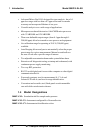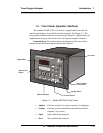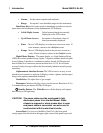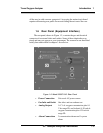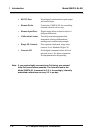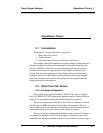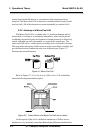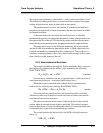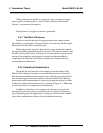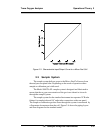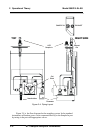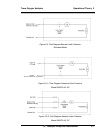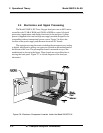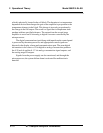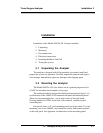
2-4
2 Operational Theory Model 3000TA-XL-EU
Teledyne Analytical Instruments
(These reactions are specific to oxygen as long as no gaseous compo-
nents capable of oxidizing lead—such as iodine, bromine, chlorine and
fluorine—are present in the sample.)
In the absence of oxygen, no current is generated.
2.2.4 The Effect of Pressure
In order to state the amount of oxygen present in the sample in parts-
per-million or a percentage of the gas mixture, it is necessary that the sample
diffuse into the cell under constant pressure.
If the total pressure increases, the rate that oxygen reaches the cathode
through the diffusing membrane will also increase. The electron transfer, and
therefore the external current, will increase, even though the oxygen concen-
tration of the sample has not changed. It is therefore important that the
sample pressure at the fuel cell (usually vent pressure) remain relatively
constant between calibrations.
2.2.5 Calibration Characteristics
Given that the total pressure of the sample gas on the surface of the
Micro-Fuel Cell input is constant, a convenient characteristic of the cell is
that the current produced in an external circuit is directly proportional to the
rate at which oxygen molecules reach the cathode, and this rate is directly
proportional to the concentration of oxygen in the gaseous mixture. In other
words it has a linear characteristic curve, as shown in Figure 2-3. Measuring
circuits do not have to compensate for nonlinearities.
In addition, since there is zero output in the absence of oxygen, the
characteristic curve has close to an absolute zero (less than ± 0.2 ppm oxy-
gen). Depending upon the application, zeroing may still be used to compen-
sate for the combined zero offsets of the cell and the electronics.



